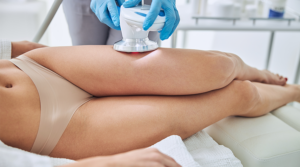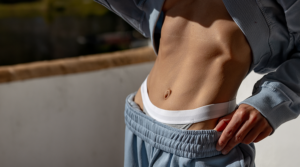Liposuction is one of the most popular cosmetic procedures worldwide—and for good reason. It provides targeted fat removal that can enhance body contours, boost confidence, and complement a healthy lifestyle. Whether you’re looking to refine stubborn areas like the abdomen, thighs, flanks, or chin, liposuction can offer transformative results.
A common question among people considering this procedure is: “When is the best time of year to undergo liposuction?” The short answer? There’s no universally “perfect” season. The best time to get liposuction depends more on your individual goals, schedule, and readiness than on the calendar.
Instead of anchoring your decision to a specific time of year, it’s more beneficial to look at lifestyle factors, recovery needs, and personal readiness. Here’s what you should consider when determining the right time for you.
1. Your Personal Schedule and Availability
Liposuction typically requires a recovery period of about one to two weeks of limited activity, depending on the area treated and the extent of the procedure. Some swelling can persist for several weeks to months, although most people feel well enough to return to work and daily life within a few days.
Choosing a time when you can take a break from your usual responsibilities—whether that means stepping back from work, parenting, or social commitments—will support a smoother recovery. Avoid scheduling surgery right before a busy season in your life or major events like weddings, vacations, or big deadlines.
2. Physical and Emotional Readiness
Cosmetic surgery is not just a physical decision—it’s also an emotional one. Are you in a healthy state of mind? Are you clear on your expectations? Are you undergoing liposuction for the right reasons?
Regardless of the month, the ideal time for any cosmetic procedure is when you feel confident, informed, and emotionally ready. Liposuction can be a positive step toward achieving your aesthetic goals, but like any surgery, it should be approached with a healthy mindset and realistic expectations.
3. Support System Availability
During the first few days after liposuction, you’ll benefit from having someone available to help with daily tasks. This is especially important if you have children, pets, or a physically demanding lifestyle.
Choose a window where your support system—partner, friend, family member, or caregiver—is available to help you rest and recover comfortably. Even if your recovery is straightforward, having someone assist with meals, driving, or light chores makes a big difference.
4. Post-Operative Care and Compression Garments
Wearing compression garments is a key part of the recovery process. These specialized garments help reduce swelling, support the healing tissues, and enhance your final results. They’re typically worn for several weeks after surgery, often 24/7 during the initial stages.
Regardless of the season, you’ll need to follow your surgeon’s guidelines for wearing these garments. While some patients find it easier to wear them under looser or layered clothing in cooler months, others don’t mind wearing them during the summer if they plan ahead for breathable fabrics and air-conditioned spaces.
5. Travel and Activity Restrictions
Liposuction requires a temporary pause on certain activities. This includes strenuous exercise, extended travel, or physically demanding tasks. For the first two to six weeks, you’ll want to avoid anything that could strain your healing body.
If you have vacations or long flights planned, it’s wise to avoid scheduling your surgery too close to those dates. Travel increases the risk of complications such as blood clots and may interfere with the body’s natural healing process. Instead, select a time when you can stay local, rest, and gradually ease back into your regular routine.
6. Health and Lifestyle Alignment
For best results, liposuction should complement a healthy lifestyle. It’s not a substitute for weight loss but rather a body contouring tool. If you’re currently making positive changes—such as improving your diet, increasing physical activity, or quitting smoking—it’s smart to wait until you’ve reached a stable place before undergoing surgery.
Being in good physical health before surgery supports better outcomes, smoother recovery, and lower risk of complications. Some patients even use the surgery as a “motivational boost” to maintain their new shape.
7. Financial Planning and Insurance Considerations
Liposuction is considered a cosmetic procedure and is not covered by most insurance plans. Since it’s an out-of-pocket expense, many people choose to schedule it when it aligns with their financial planning—such as after tax season, during a work bonus cycle, or when flexible financing options are available.
Planning ahead can help reduce financial stress and allow you to fully focus on healing and self-care.
Conclusion: Timing is Personal, Not Seasonal
Ultimately, the best time of year to undergo liposuction is when the timing works best for your life—not just the season outside. While weather, clothing, and holiday breaks may play a role in your planning, they’re just one piece of a much bigger picture.
The most important factors are your overall health, your support system, your availability for recovery, and your mindset going into the procedure. With the guidance of a board-certified plastic surgeon, you can create a timeline that’s tailored to your body, your goals, and your lifestyle.
There’s no “perfect month” for liposuction—but when you’re ready, and your circumstances align, that’s your perfect time.













